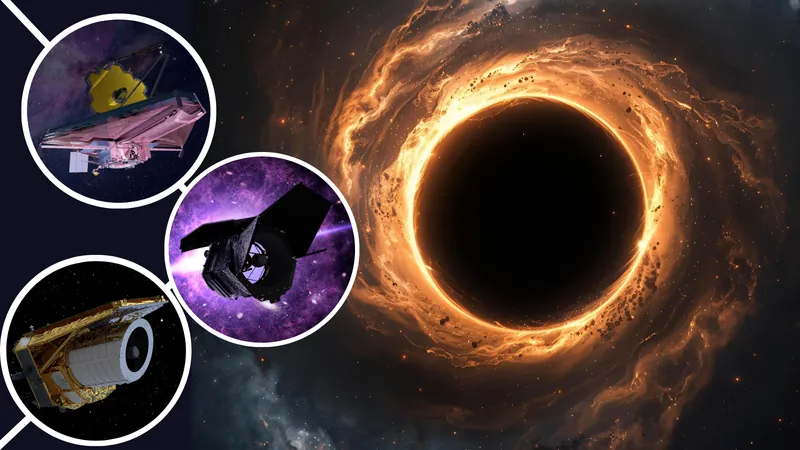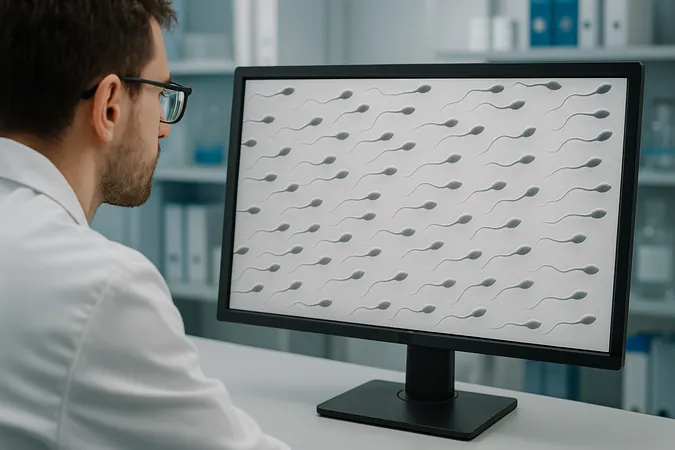
Unlocking Cosmic Mysteries: How Three Space Telescopes Could Unravel the Enigma of Early Supermassive Black Holes
2025-09-05
Author: Nur
A Triumphant Trio in Space Exploration
Exciting new research reveals a revolutionary approach to hunting for supermassive black holes from the cosmos' earliest days. Imagine a powerful alliance formed by the James Webb Space Telescope (JWST), the Euclid telescope, and NASA's forthcoming Nancy Grace Roman Space Telescope. Together, they could uncover black holes millions to billions of times heavier than our sun—some dating back to when the universe was just 270 million years old!
Revolutionizing Cosmic Evolution
Detecting these colossal celestial entities would not only revolutionize our understanding of black hole formation but could also address a perplexing dilemma unveiled by JWST’s observations since its launch in 2022. The JWST has already identified supermassive black holes dating back to less than a billion years after the Big Bang, including the astonishing JADES-GS-z14-0. But existing models struggle to explain how these massive giants could form so swiftly—usually theorized to take at least 1 billion years through mergers and matter consumption.
A New Perspective on Black Hole Formation
Muhammad A. Latif from the United Arab Emirates University suggests that these ancient behemoths hint at a new model of growth. Instead of a gradual accumulation of mass over time, these black holes may have been born massive, right at their inception. Latif elaborates, "Supermassive black holes appearing so early suggest they had hefty starting points, possibly forming when dense patches of cosmic gas and dust collapsed directly into black holes without the intermediary step of star formation."
The Direct Collapse Scenario Explained
Delving deeper, the 'direct collapse scenario' indicates that under specific conditions—such as intense radiation or dense gas streams—these massive black holes could form directly, bypassing the birth of ordinary stars. This groundbreaking concept could lead to black holes that are 10,000 to 100,000 times the mass of our sun right from the start.
Hunting Supermassive Black Holes: The Collaborative Advantage
Currently, one might wonder why JWST hasn't flagged these early black holes. While its observational capabilities are impressive, its field of view is significantly smaller compared to the Roman and Euclid telescopes. Latif notes, "Their broader scopes—100 times that of JWST—mean they can discover far more black holes in the early universe.
A Bright Future of Cosmic Research
Combining the detailed imaging ability of JWST with the wide-field capabilities of Roman and Euclid holds the promise of uncovering approximately 100 black holes just 250 million years post-Big Bang. Such discoveries could not only confirm black hole formation models but provide a breathtaking glimpse into the infancy of our universe.
Latif and his colleague Daniel Whalen plan to run further simulations tracking the growth of these enthralling direct collapse black holes. With enhanced forecasting abilities, there's a bright future ahead for cosmic discovery as we unravel the origins and evolution of these mysterious celestial giants.

 Brasil (PT)
Brasil (PT)
 Canada (EN)
Canada (EN)
 Chile (ES)
Chile (ES)
 Česko (CS)
Česko (CS)
 대한민국 (KO)
대한민국 (KO)
 España (ES)
España (ES)
 France (FR)
France (FR)
 Hong Kong (EN)
Hong Kong (EN)
 Italia (IT)
Italia (IT)
 日本 (JA)
日本 (JA)
 Magyarország (HU)
Magyarország (HU)
 Norge (NO)
Norge (NO)
 Polska (PL)
Polska (PL)
 Schweiz (DE)
Schweiz (DE)
 Singapore (EN)
Singapore (EN)
 Sverige (SV)
Sverige (SV)
 Suomi (FI)
Suomi (FI)
 Türkiye (TR)
Türkiye (TR)
 الإمارات العربية المتحدة (AR)
الإمارات العربية المتحدة (AR)